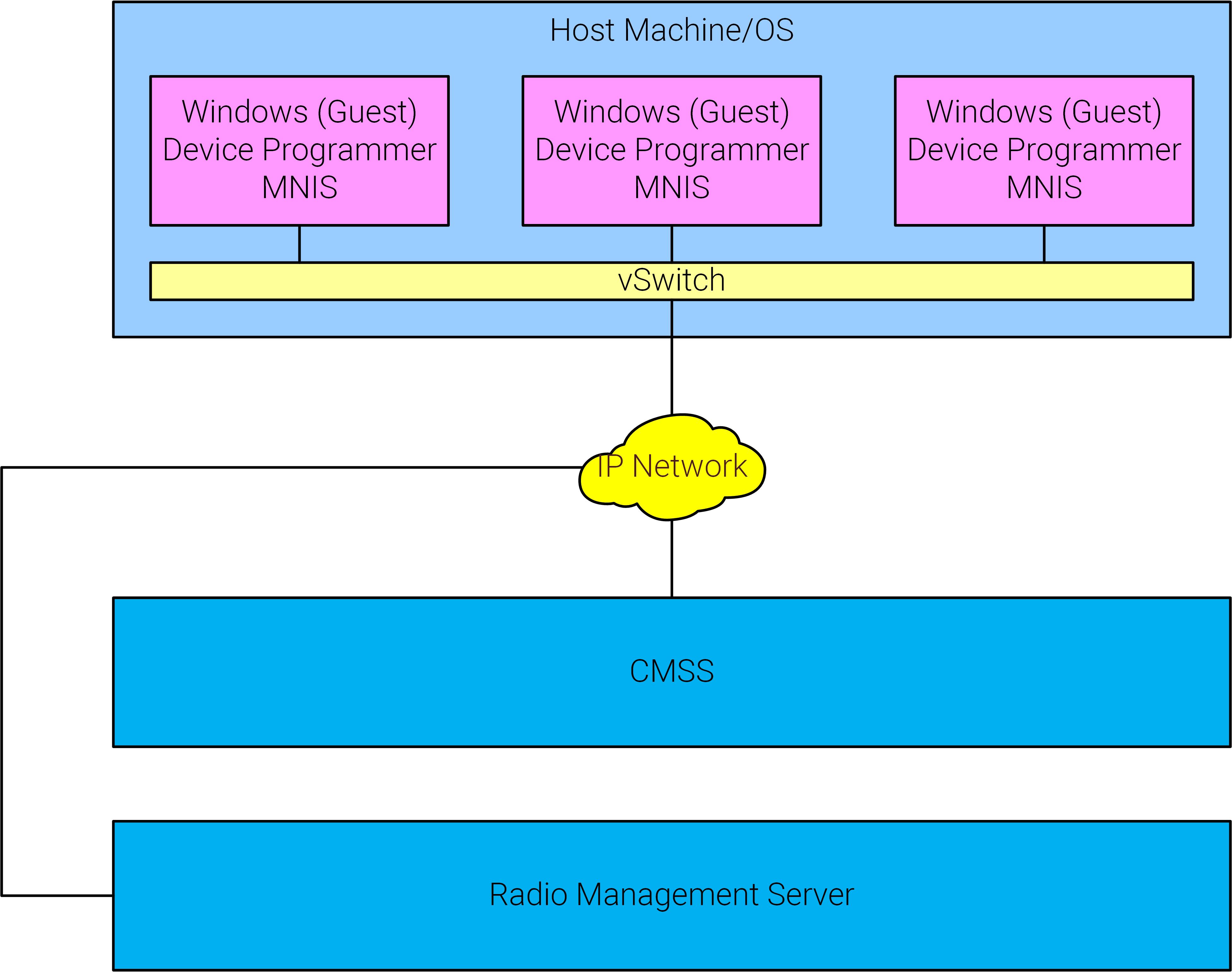OTAP en masse
[A] I’ve not seen a better way than this being done by anyone yet. The way I would reduce the number of computers needed, is to use Virtualisation. I wrote a guide on how to virtualise MOTOTRBO applications last year, which might help you.
At the time of writing this, I have not tested this so some things may need some tweaking if you are going to follow what I've written below.
If this is a temporary requirement, and you will be using a working computer (i.e. you don’t want to wipe the disk and want to use it as-is afterwards), then you could use Microsoft Hyper-V to create virtual machines on top of Windows then delete these once the mass OTAP exercise is over.
On each guest virtual machine, you would install Device Programmer and MNIS. Each Device Programmer would point back to the Radio Management Server and would - in your case - connect into the Trunking Controller on the active CMSS.
If this was not a Capacity Max system, the setup would almost be the same, except that one of the virtual machines will also need to have DDMS on it and the Device Programmer on each virtual machine would need to point back to it. This is true for both Capacity Plus and IP Site Connect systems.
For mass OTAP to work in an IP Site Connect system, there needs to be a sufficient number of channels to pass data. Also, the target radios need to be spread across all of these channels. These channels will also need to be local (i.e. although the repeaters are part of an IPSC system, no voice or data traffic is passed to the other repeaters, or more specifically, IP Site Connect is set to None.
In all cases, each MNIS will need to have a unique Radio ID.
In a Capacity Max system, the Radio ID is set in Radio View before exporting the GWCFGX file. Also, remember that each of these MNIS instances will need to be added to the Subscriber Access Control table (otherwise registration will be denied for them). Since there could be multiple MNISes connecting to the system at the same time using the same service, you will need to have one MNIS Data Gateway Licence per MNIS instance to allow this.
For non-Capacity Max systems, the Radio ID is set in the MNIS Configuration Utility itself. Each repeater in the system will also need a NAI Data licence, if they will be used for OTAP.
In the second diagram, showing a Capacity Plus system, note that one of the virtual machines has DDMS installed on it. In this case, you would probably need to use a static IP address for this guest as the Device Programmers on the other two guest machines need to know where to get presence information. The Device Programmer on the same machine would use 127.0.0.1 whereas the other two virtual machines will need to use whatever IP address you gave to that VM.
Each Device Programmer should have a unique ID.
The number of concurrent jobs should also be increased in the Job Processor - if the computer on which it's running (usually the Radio Management server) has sufficient cores and threads to support this.
In the above diagrams, I have shown three virtual machines. Of course, the number of virtual machines you use is almost limitless. I guess there is a limitation to the number of Device Programmers and MNISes you can have connected to a system but a PC with four or five virtual machines won't put a load on anything.
Using a setup like what is shown in the diagrams, you could OTAP up to three radios at the same time. If each OTAP job takes one minute, with this you could update 180 radios per hour.
Quite often I have "treppenhaus gedanken" whenever posting stuff like this. This means that I forget to mention something and (when I'm busy with other stuff) I forget to add it in later. So, if you think I've missed something, or there is something that's still not clear to you, please let me know in the comments.






Leave a Comment